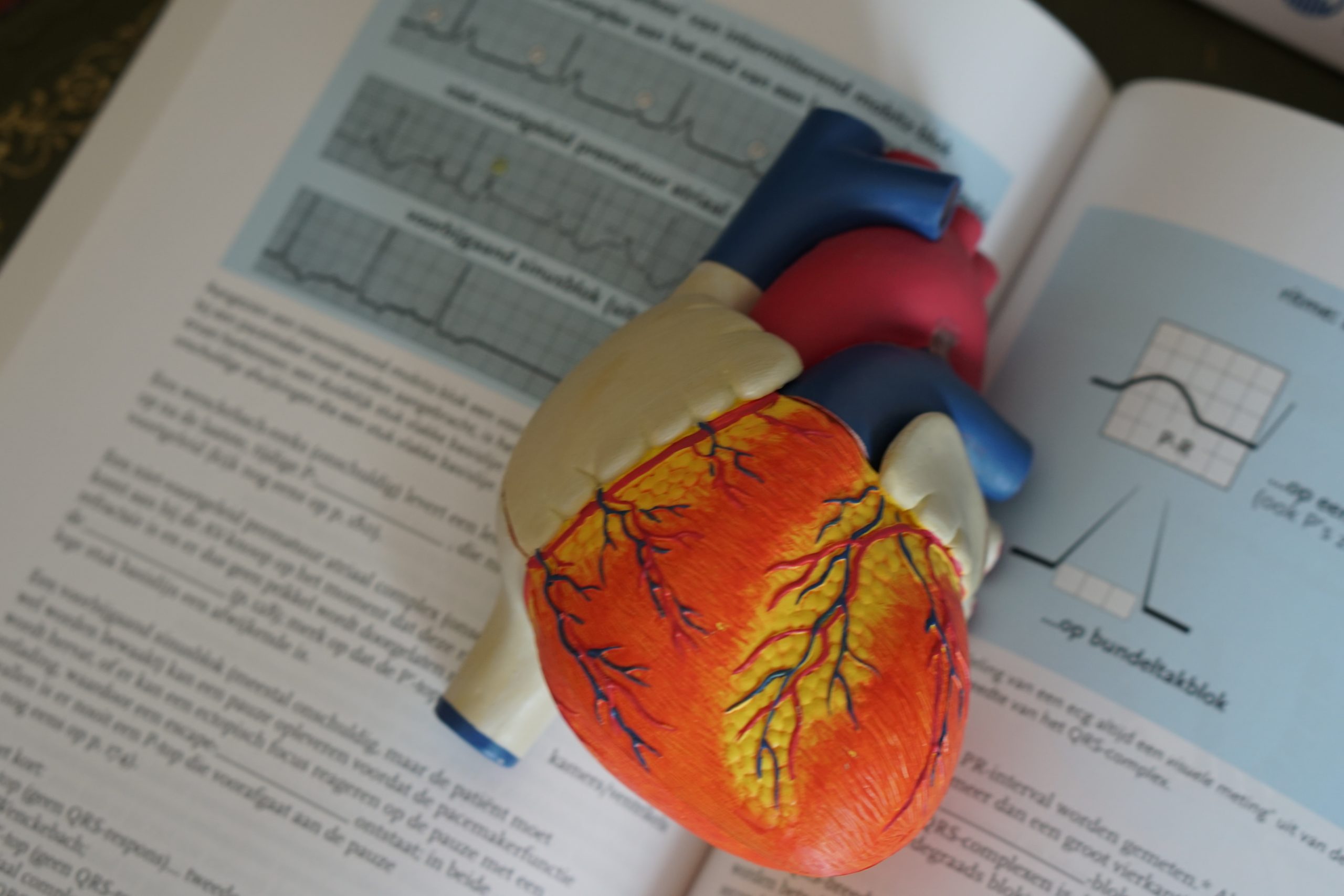Your heart is a vital organ that beats tirelessly to keep you alive, pumping blood to all parts of your body. Keeping your heart health at the forefront of your mind is essential to avoid serious health complications such as heart disease, heart attacks, and strokes.
This article will provide you with everything you need to know about cardiovascular health, including how to maintain a healthy heart, the signs of heart problems, and the latest medical advancements to prevent and treat heart disease.
So, whether you’re looking to take preventative measures or already have an existing heart condition, we’ve got you covered.
Let’s dive in and learn more about heart health!
Cardiovascular Health: What Does it Mean to Have a Healthy Heart?
Your heart is the center of your cardiovascular system, which includes blood vessels, arteries, and veins. Together, these organs work to circulate blood and oxygen to all parts of your body. Maintaining good cardiovascular health means taking care of all these organs to ensure that they work in harmony and efficiently.
So, what does it mean to have a healthy heart? A healthy heart is one that can perform its essential functions without any complications. Some key factors that contribute to a healthy heart include:
- Normal Blood Pressure – High blood pressure puts extra strain on your heart and can lead to heart disease, stroke, and other health problems. It’s important to keep your blood pressure within a healthy range, which is typically less than 120/80 mmHg.
- Normal Cholesterol Levels – Cholesterol is a fatty substance that can accumulate in your arteries and increase the risk of heart disease. A healthy heart has normal cholesterol levels, typically less than 200 mg/dL.
- Healthy Eating Habits – A diet that’s rich in fruits, vegetables, whole grains, lean protein, and healthy fats can reduce the risk of heart disease and help maintain a cardiovascular health.
- Regular Exercise – Exercise is essential for cardiovascular health. Regular physical activity can help lower blood pressure, reduce the risk of heart disease, and improve overall health.
- Smoking and Excessive Alcohol Consumption – Smoking and excessive alcohol consumption can increase the risk of heart disease and other health problems. Avoiding these habits is essential in ensuring your heart is healthy.
Types of Heart Failure
While maintaining a healthy heart is crucial for overall health, sometimes factors such as age, genetics, lifestyle, and other medical conditions can cause heart problems.
There are different types of heart failure, such as congestive heart failure, acute heart failure, chronic heart failure, and diastolic heart failure, each with its own set of causes and symptoms. In this section, we’ll explore some of the most common types of heart failure, including unstable angina, heart attack, arrhythmia, valve disease, high blood pressure, congenital heart conditions, and inherited heart conditions.
Understanding these different types of heart failure symptoms can help you recognize the warning signs and seek medical attention for treatment promptly.
So, let’s dive in and learn more about the causes of heart failure and the different types.
Unstable Angina
Unstable angina is a type of chest pain that occurs when there is reduced blood flow to the heart. Unlike stable angina, which is usually triggered by physical activity or stress and goes away with rest, unstable angina can occur even when at rest and is a sign of a potentially life-threatening heart condition.
Unstable Angina Causes
Unstable angina is often caused by the buildup of fatty deposits, called plaques, in the arteries that supply blood to the heart. These plaques can rupture or break open, causing a blood clot to form and block the flow of blood to the heart.
Other factors that can contribute to the development of unstable angina include high blood pressure, high cholesterol levels, smoking, diabetes, obesity, and a family history of heart disease.
Unstable Angina Symptoms
Unstable angina can present a wide range of symptoms, including:
- Chest pain or discomfort that may feel like pressure, tightness, or squeezing
- Shortness of breath
- Sweating
- Nausea or vomiting
- Lightheadedness or dizziness
- These symptoms can occur at rest, during physical activity, or even while sleeping, and they can last from a few minutes to several hours. If you experience any of these symptoms, it’s important to seek medical attention immediately.
Unstable Angina Treatment
The goal of treatment for unstable angina is to reduce the risk of heart attack and improve blood flow to the heart. The first step in treatment is to diagnose the condition, which usually involves a physical exam, medical history, and diagnostic tests such as an electrocardiogram (ECG), blood tests, and a stress test. Depending on the severity of the condition, treatment options may include:
- Medications – Certain medications can help to reduce chest pain, lower blood pressure, and prevent blood clots, such as nitroglycerin, aspirin, beta-blockers, and calcium channel blockers.
- Procedures – In some cases, more invasive procedures may be necessary to improve blood flow to the heart, such as angioplasty or stenting, which involves inserting a small tube into the artery to open up the blockage.
- Lifestyle Changes – Living a healthy lifestyle, such as quitting smoking, maintaining a healthy weight, eating a healthy diet, and exercising regularly, can significantly improve heart health and reduce the risk of future heart problems.
Unstable Angina ICD 10
Unstable angina is a type of chest pain caused by reduced blood flow to the heart muscle. It is characterized by a sudden onset and is not relieved by rest or medication. ICD-10-CM (International Classification of Diseases, 10th Revision, Clinical Modification) is a system used to classify and code diagnoses and procedures in medical records. The ICD-10-CM code for unstable angina is I20.0. This code is used to indicate a diagnosis of unstable angina in a patient’s medical record. It is important to accurately code and document unstable angina in medical records for proper diagnosis, treatment, and reimbursement purposes. Treatment options for unstable angina include medications, lifestyle changes, and sometimes invasive procedures such as angioplasty or coronary artery bypass surgery.
Congestive Heart Failure ICD10
Congestive heart failure (CHF) is a chronic condition where the heart is unable to pump blood effectively, leading to fluid buildup in the lungs and other tissues. ICD-10-CM (International Classification of Diseases, 10th Revision, Clinical Modification) is a system used to classify and code diagnoses and procedures in medical records. The ICD-10-CM code for congestive heart failure is I50.9. This code is used to indicate a diagnosis of CHF in a patient’s medical record. Accurate coding and documentation of CHF in medical records is important for proper diagnosis, treatment, and reimbursement purposes. Treatment options for CHF may include medication, lifestyle changes, or surgical interventions, depending on the severity of the condition.
Heart Attack
A heart attack, also known as myocardial infarction (MI), occurs when the blood flow to a part of the heart is blocked, causing damage to the heart muscle. A heart attack is a medical emergency and requires prompt medical attention.
Heart Attack Causes
A heart attack is often caused by the buildup of plaque in the arteries that supply blood to the heart. When the plaque ruptures, a blood clot can form and block the flow of blood to the heart.
Other factors that can contribute to the development of a heart attack include high blood pressure, high cholesterol levels, smoking, diabetes, obesity, and a family history of heart disease.
Heart Attack Symptoms
The symptoms of a heart attack can vary from person to person, and the symptoms heart attack woman may be different as well, but some common symptoms include:
- Chest pain or discomfort that may feel like pressure, squeezing, fullness, or pain
- Shortness of breath
- Nausea or vomiting
- Sweating
- Lightheadedness or dizziness
- Pain or discomfort in the arms, back, neck, jaw, or stomach
The symptoms of a heart attack can occur suddenly or develop over time. These symptoms are not signs that your heart is healthy. You may be wondering how long does a heart attack last? They can last from a few minutes to several hours. It’s essential to know these early warning signs of heart attack, the difference between a heart attack vs stroke, and to seek medical attention immediately if you experience any of these symptoms.
Back Pain Heart Attack
Back pain can be a symptom of a heart attack, although it is not always present. When back pain is caused by a heart attack, it is typically felt between the shoulder blades or in the upper back, rather than in the lower back. The pain may be accompanied by other symptoms such as chest pain or discomfort, shortness of breath, nausea, and sweating. It is important to seek medical attention immediately if you experience any of these symptoms, as early treatment can improve outcomes. However, it is important to note that back pain is a common condition and is not always indicative of a heart attack.
Shoulder Pain Heart Attack
Shoulder pain can be a symptom of a heart attack, although it is less common than chest pain. The pain may be felt in one or both shoulders and can radiate down the arm, as well as to the neck, jaw, or back. The pain may be accompanied by other symptoms such as chest pain or discomfort, shortness of breath, nausea, and sweating. It is important to seek medical attention immediately if you experience any of these symptoms, as early treatment can improve outcomes. However, it is important to note that shoulder pain is a common condition and is not always indicative of a heart attack.
Heart Attack Treatment
The goal of treatment for a heart attack is to restore blood flow to the heart and prevent further damage to the heart muscle. The first step in treatment is to diagnose the condition, which usually involves a physical exam, medical history, and diagnostic tests such as an electrocardiogram (ECG), blood tests, and a coronary angiogram.
Depending on the severity of the condition, treatment options may include:
- Medications – Certain medications can help to reduce chest pain, lower blood pressure, and prevent blood clots, such as aspirin, nitroglycerin, beta-blockers, and ACE inhibitors.
- Procedures – In some cases, such as a massive heart attacks, more invasive procedures may be necessary to improve blood flow to the heart, such as angioplasty or stenting, which involves inserting a small tube into the artery to open up the blockage, or coronary artery bypass surgery, which involves creating a new path for blood to flow around the blocked artery.
- Lifestyle Changes – Adopting a healthy lifestyle, such as quitting smoking, maintaining a healthy weight, eating a healthy diet, and exercising regularly, can significantly improve heart health and reduce the risk of future heart problems.
How Long Does a Heart Attack Last?
The duration of a heart attack can vary depending on several factors, including the severity of the heart attack and the individual’s overall health. Some heart attacks can be sudden and intense, with symptoms lasting for a few minutes or more, while others may occur gradually with milder symptoms that last for several hours or even days. It is crucial to seek medical attention immediately if you suspect you or someone you know is having a heart attack, as early treatment can improve outcomes and potentially save lives. Time is a critical factor in the treatment of heart attacks, so prompt medical attention is essential.
Aortic Stenosis ICD10
Aortic stenosis is a condition characterized by the narrowing of the aortic valve, the valve that controls blood flow from the heart to the rest of the body. ICD-10-CM (International Classification of Diseases, 10th Revision, Clinical Modification) is a system that classifies and codes diagnoses and procedures in medical records. The ICD-10-CM code for aortic stenosis is I35.0. This code is used to indicate a diagnosis of aortic stenosis in a patient’s medical record. Treatment options for aortic stenosis may include medication, lifestyle changes, or surgical interventions, such as aortic valve replacement. Accurate coding and documentation of aortic stenosis in medical records is important for proper diagnosis, treatment, and reimbursement purposes.
Arrhythmia
Arrhythmia is a condition in which the heart beats irregularly, too fast, or too slow. It occurs when the electrical impulses that control the heart’s rhythm are disrupted. Arrhythmia, such as ventricular trigeminy, can be harmless, but in some cases, it can be life-threatening and require medical attention.
Arrhythmia Causes
Arrhythmia can be caused by various factors, including heart disease, high blood pressure, diabetes, smoking, excessive alcohol consumption, drug abuse, stress, and some medications. In some cases, arrhythmia may occur due to an underlying medical condition, such as premature ventricular contractions or premature atrial contractions, or even a genetic predisposition.
Arrhythmia Symptoms
The symptoms of arrhythmia can vary depending on the type and severity of the condition. Some common symptoms of arrhythmia include:
- Palpitations or irregular heartbeat
- Fluttering or pounding in the chest
- Shortness of breath
- Dizziness or lightheadedness
- Chest pain or discomfort
- In some cases, arrhythmia may not present any symptoms, and it may be detected during a routine medical checkup.
Arrhythmia Treatment
The goal of treatment for arrhythmia is to restore the heart’s normal rhythm and prevent complications. The first step in treatment is to diagnose the type and severity of the arrhythmia, which usually involves a physical exam, medical history, and diagnostic tests such as an electrocardiogram (ECG), a Holter monitor, or an event recorder.
Depending on the type and severity of the arrhythmia, treatment options may include:
- Medications – Certain medications can help to regulate the heart’s rhythm and reduce the risk of complications, such as antiarrhythmic drugs, beta-blockers, and calcium channel blockers.
- Procedures – In some cases, more invasive procedures may be necessary to correct the arrhythmia, such as catheter ablation, which involves inserting a catheter into the heart to destroy the tissue that’s causing the irregular heartbeat, or pacemaker implantation, which involves inserting a device that sends electrical impulses to the heart to regulate its rhythm.
- Lifestyle Changes – Adopting a healthy lifestyle by quitting smoking, keeping your weight down, eating healthy foods, and doing you best to eliminate stress, will help keep your heart healthy and lower the risk of an arrhythmia.
Ventricular Trigeminy
Ventricular trigeminy is a heart rhythm disorder where every third heartbeat is a premature ventricular contraction (PVC) originating from the ventricles, the lower chambers of the heart. It is called trigeminy because it follows a pattern of two normal beats followed by one PVC. Ventricular trigeminy is usually benign and does not require treatment. However, it can be a sign of underlying heart disease, such as myocardial infarction, cardiomyopathy, or electrolyte imbalances. In some cases, ventricular trigeminy can lead to more serious arrhythmias, such as ventricular tachycardia or fibrillation, which require medical intervention. Treatment options for ventricular trigeminy may include medications, lifestyle changes, or cardiac interventions, depending on the underlying cause.
Valve Disease
Valve disease is a condition in which one or more of the heart’s valves doesn’t function properly, either by not opening enough (aortic stenosis icd10) or not closing properly, as seen in mitral valve prolapse. Valve disease can cause the heart to work harder to pump blood, leading to heart failure, stroke, or other serious complications.
Valve Disease Causes
Heart valve disease can be caused by various factors, including aging, congenital heart defects, infections, and damage due to a heart attack. In some cases, valve disease may be caused by an autoimmune disorder or certain medications.
Valve Disease Symptoms
The symptoms of valve disease, including mitral valve prolapse symptoms, can vary depending on the type and severity of the condition. These symptoms may also differ depending on which valve is affected, such as the tricuspid valve, the bicuspid aortic valve, or the aortic valve. Some common symptoms of valve disease include:
- Shortness of breath
- Chest pain or discomfort
- Fatigue
- Swelling in the legs, ankles, or feet
- Rapid or irregular heartbeat
- Dizziness or fainting
- In some cases, valve disease may not present any symptoms, and it may be detected during a routine medical checkup.
Valve Disease Treatment
The goal of treatment for valve disease is to improve the valve’s function and reduce the risk of complications. The first step in treatment is to diagnose the type and severity of valve disease, which usually involves a physical exam, medical history, and diagnostic tests such as an echocardiogram or cardiac catheterization.
Depending on the type and severity of valve disease, treatment options may include:
- Medications – Certain medications can help to manage the symptoms of valve disease, such as diuretics, beta-blockers, and ACE inhibitors.
- Procedures – In some cases, more invasive procedures may be necessary to repair or replace the damaged valve, such as valve repair, which involves reconstructing the valve to improve its function, or aortic valve replacement, which involves removing the damaged valve and replacing it with a prosthetic valve.
- Lifestyle Changes – Executing a healthy lifestyle by not smoking, having a normal weight, sticking to a healthy diet plan, and keeping stress levels low, can and will significantly improve cardiovascular health and reduce the risk of valve disease.
High Blood Pressure
High blood pressure, also known as hypertension, is a common condition that occurs when the force of blood against the walls of the arteries is too high. Over time, high blood pressure can cause damage to the arteries, leading to heart disease, stroke, and other health problems.
High Blood Pressure Causes
High blood pressure can be caused by various factors, including age, genetics, obesity, smoking, lack of physical activity, stress, and certain medical conditions, such as kidney disease or sleep apnea.
High Blood Pressure Symptoms
In most cases, high blood pressure does not present any symptoms. This is why it is often called the “silent killer.” Some people with high blood pressure may experience symptoms such as headaches, dizziness, or nosebleeds, but these symptoms are not specific to high blood pressure and can be caused by other conditions.
High Blood Pressure Eye Symptoms
High blood pressure, also known as hypertension, can have a number of effects on the eyes. One of the most common symptoms of high blood pressure in the eyes is hypertensive retinopathy, which is caused by damage to the small blood vessels in the retina. This can cause symptoms such as blurred vision, double vision, and a decrease in visual acuity. In some cases, high blood pressure can also lead to optic neuropathy, which can cause vision loss. Regular eye exams are important for detecting these symptoms and managing high blood pressure to prevent further damage. It is important to control high blood pressure through lifestyle changes and medications to prevent these and other complications.
High Blood Pressure Treatment
The goal of high blood pressure treatments is to lower the blood pressure to a normal level and reduce the risk of complications. The first step in treatment is to diagnose high blood pressure, which usually involves multiple blood pressure readings and diagnostic tests.
Depending on the severity of high blood pressure, treatment options may include:
- Medications – Certain medications can help to lower blood pressure, such as diuretics, ACE inhibitors, calcium channel blockers, and beta-blockers.
- Lifestyle Changes – Adopting a healthy lifestyle can significantly improve high blood pressure and reduce the risk of complications. This includes maintaining a healthy weight, eating a healthy diet, reducing salt intake, exercising regularly, quitting smoking, and reducing stress.
- Monitoring – Regular monitoring of blood pressure is essential for managing high blood pressure. This includes regular checkups with a healthcare provider, self-monitoring of blood pressure at home, and tracking blood pressure readings over time.
Congenital Heart Conditions
Congenital heart conditions are heart defects that are present at birth. These defects can affect the heart’s structure and function, leading to various symptoms and complications. Some congenital heart conditions can be mild and not require treatment, while others, such as critical congenital heart disease, can be life-threatening and require medical attention.
Congenital Heart Condition Causes
The cause of heart congenital disease is often unknown, but factors such as genetics, infections during pregnancy, and exposure to environmental toxins or medications can increase the risk of developing a congenital heart defect.
Congenital Heart Condition Symptoms
The symptoms of congenital heart conditions can vary depending on the type and severity of the defect. Some common symptoms of congenital heart conditions include:
- Cyanosis (a bluish tint to the skin, lips, or fingernails)
- Shortness of breath
- Fatigue
- Poor growth or weight gain in infants
- Rapid or irregular heartbeat
- Swelling in the legs, ankles, or feet
- Chest pain or discomfort
In some cases, congenital heart conditions may not present any symptoms and they may be detected during a routine medical checkup.
Congenital Heart Condition Treatment
The treatment for congenital heart conditions depends on the type and severity of the defect. Some congenital heart conditions may not require treatment, while others may require medication, surgery, or other procedures.
Treatment options may include:
- Medications – Certain medications can help to manage the symptoms of congenital heart conditions, such as diuretics, beta-blockers, and ACE inhibitors.
- Procedures – In some cases, more invasive procedures may be necessary to correct the defect, such as heart catheterization, which involves inserting a catheter into the heart to repair the defect. Or open-heart surgery, which involves making an incision in the chest to access the heart.
- Lifestyle Changes – Adopting a healthy lifestyle, which means not smoking, maintaining a healthy weight, eating right, and avoiding high stress factors, can significantly improve heart health and reduce the risk of complications.
Inherited Heart Conditions
Inherited heart conditions are heart defects or diseases that are passed down from one generation to another through genes. These conditions can affect the heart’s structure, function, or rhythm, leading to various symptoms and complications. Inherited heart conditions can be present at birth or develop later in life.
Inherited Heart Condition Causes
Inherited heart conditions are caused by genetic mutations or changes in the DNA. These mutations can be inherited from one or both parents, or they can occur spontaneously.
Inherited Heart Conditions Symptoms
The symptoms of inherited heart conditions can vary depending on the type and severity of the condition. Some common symptoms of inherited heart conditions include:
- Palpitations or irregular heartbeat
- Shortness of breath
- Chest pain or discomfort
- Dizziness or fainting
- Fatigue
- Swelling in the legs, ankles, or feet
- In some cases, inherited heart conditions may not present any symptoms, and they may be detected during a routine medical checkup.
Inherited Heart Conditions Treatment
The treatment for inherited heart conditions depends on the type and severity of the condition. Some inherited heart conditions may not require treatment, while others may require medication, surgery, or other procedures.
Treatment options may include:
- Medications – Certain medications can help to manage the symptoms of inherited heart conditions, such as antiarrhythmic drugs, beta-blockers, and calcium channel blockers.
- Procedures – In some cases, more invasive procedures may be necessary to correct the condition, such as pacemaker implantation, which involves inserting a device that sends electrical impulses to the heart to regulate its rhythm. Or a heart transplant, which involves replacing a damaged heart with a healthy one.
- Genetic Counseling – Genetic counseling can be helpful for people with inherited heart conditions and their families. It can provide information on the condition, the amount of risk in passing it on to future generations, and the proper options for family planning.
Signs of Heart Blockage
Heart blockage is a condition in which the blood flow to the heart is restricted due to a blockage in the arteries. This can lead to various symptoms and complications, including chest pain, heart attack, and stroke. Knowing the signs of heart blockage can help you seek medical attention promptly and can go a long way toward heart attack prevention.
Heart blockage is caused by the buildup of plaque in the arteries, which can narrow or block the blood flow to the heart. This buildup can be caused by various factors, including high blood pressure, high cholesterol, smoking, diabetes, and a family history of heart disease.
What are the Signs of Heart Blockage?
The signs of heart blockage can vary depending on the severity of the blockage and the location of the affected arteries. Some common signs of heart blockage include:
- Chest pain or discomfort – This is the most common symptom of heart blockage. The pain may feel like pressure, tightness, or squeezing in the chest, and it may spread to the neck, jaw, arms, back, or stomach. The pain may occur during physical activity or emotional stress and may be relieved by rest.
- Shortness of breath – Heart blockage can cause shortness of breath, especially during physical activity or when lying down.
- Fatigue – Heart blockage can cause fatigue or weakness, especially during physical activity.
- Dizziness or lightheadedness – Heart blockage can cause dizziness or lightheadedness, especially when standing up or exerting yourself.
- Nausea or vomiting – Heart blockage can cause nausea or vomiting, especially when combined with other symptoms.
- Sweating – Heart blockage can cause excessive sweating, especially when combined with other symptoms.
Eating for Heart Health
Diet plays a crucial role in maintaining a healthy heart. A healthy diet can help lower the risk of heart disease and stroke and improve overall heart health. Eating a variety of heart healthy foods and avoiding foods high in saturated and trans fats can significantly improve heart health.
Importance of Diet for Heart Health
A diet that is high in fruits, vegetables, whole grains, and lean protein can help reduce the risk of heart disease and stroke. A heart healthy diet contains essential nutrients that promote cardiovascular health, including fiber, vitamins, minerals, and antioxidants. In contrast, a diet that is high in saturated, trans fats, added sugars, and/or high sodium can increase the risk of heart disease and stroke.
Heart-Healthy Foods
Here are some foods that are good for your heart that you can include in your diet:
- Fruits and Vegetables – Fruits and vegetables are rich in vitamins, minerals, and antioxidants that promote heart health. Aim to eat at least five servings of fruits and vegetables per day and choose a variety of colors for maximum benefit (different colored foods have different nutrients and vitamins to help your body).
- Whole Grains – Whole grains contain fiber, which helps lower cholesterol and reduces the risk of heart disease. Choose whole-grain bread, pasta, and cereals, and avoid refined grains.
- Lean Protein – Choose lean protein sources, such as fish, skinless poultry, beans, and nuts instead of red meat and other fatty meats.
- Low-Fat Dairy – Low-fat dairy products, such as milk, yogurt, and cheese, are good sources of calcium and vitamin D, which are essential for heart health.
- Nuts and Seeds – Nuts and seeds are high in healthy fats, fiber, and protein. Choose unsalted varieties, and limit your portion sizes.
- Fish – Fatty fish, such as salmon, mackerel, and sardines, are rich in omega-3 fatty acids, which can help lower the risk of heart disease.
- Dark Chocolate – Dark chocolate contains flavonoids, which can improve heart health. Choose chocolate with at least 70% cocoa solids and limit your portion sizes.
- Heart Healthy Drinks – In addition to a heart-healthy diet, choosing the right drinks can also promote heart health. Cardiovascular health is directly tied to your heart and hydration levels. Water is the best choice for hydration, but other heart-healthy drinks include green tea, black tea, and red wine in moderation. These drinks contain antioxidants and other nutrients that can benefit you. It’s important to limit or avoid sugary drinks, such as soda and fruit juice, which can increase the risk of disease and even a myriad other health problems.
It’s important to note that while these foods are some of the best foods for your heart, it’s also important to eat them in moderation and in combination with a balanced diet.
Stroke vs Heart Attack
A stroke and a heart attack are both serious medical conditions that can be life-threatening if not treated promptly. While both conditions involve the interruption of blood flow to important organs, they occur in different parts of the body. A heart attack occurs when blood flow to the heart is blocked, causing damage to the heart muscle. A stroke occurs when blood flow to the brain is interrupted, leading to brain damage. Symptoms of a heart attack include chest pain or discomfort, shortness of breath, and sweating, while symptoms of a stroke include sudden weakness, numbness, or difficulty speaking or seeing. Treatment for both conditions involves immediate medical attention and may include medications, lifestyle changes, and rehabilitation.
Achieving Heart Health
In conclusion, having a healthy heart is essential for your overall well-being and longevity. Knowing the signs of heart disease, such as heart blockage, arrhythmia, and valve disease, can help you seek medical attention promptly and prevent serious complications.
Adopting a healthy lifestyle, including regular exercise and a heart-healthy diet, can significantly improve heart health and reduce the risk of heart disease and stroke.
In addition, managing medical conditions such as high blood pressure and inherited heart conditions, can prevent serious complications and improve heart health. By taking care of your heart, you can live a longer, healthier life.
Zoppler is reader supported and may earn affiliate commissions from links on this page. We support and believe in all the products and services we promote and are affiliated with.











